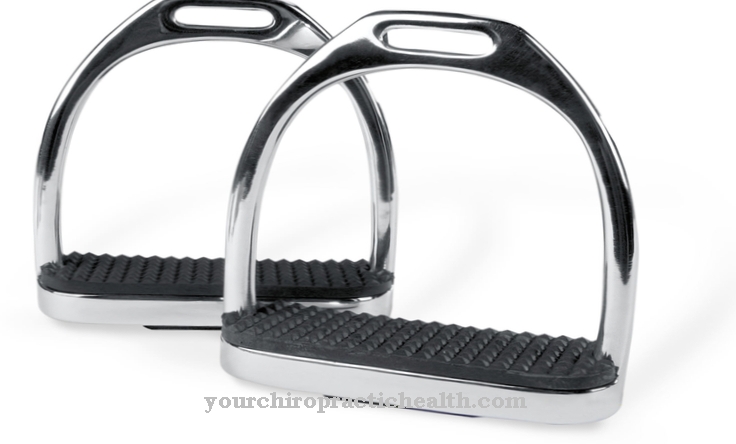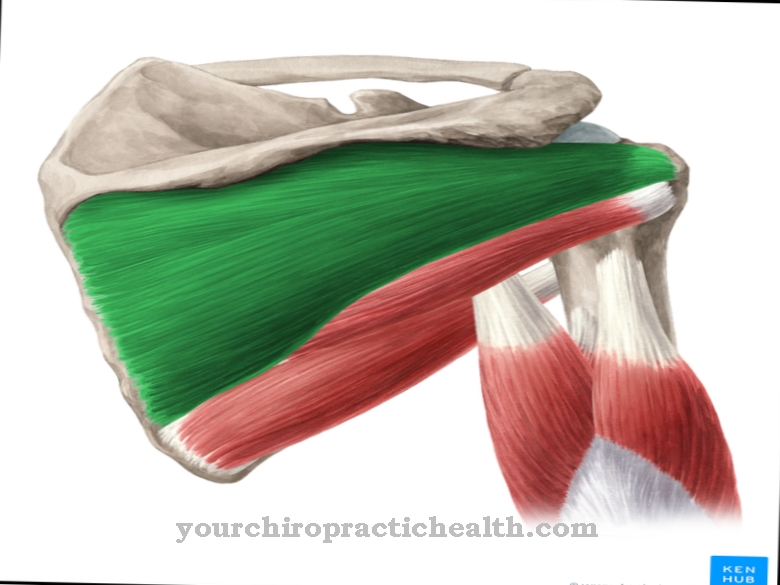In which Ankle joint, also as ankle known, it is an important joint that connects the foot and calf. The Ankle joint is actually a pleasant "contemporary": It usually works well for a lifetime, is hardly noticed, and only worries its owner if you get injured by it. Then a peculiarity becomes clear: "The ankle joint as such, for example, doesn't actually exist - there are two on each side ....
What is the ankle?

The Ankle joint connects the lower leg and foot and is colloquially also, taking into account the adjacent bone structures, as ankle designated.
The ankle joint is divided into an upper and a lower ankle joint, which only work together to enable the foot to move freely and walk upright.
Of the ankle is formed from several bones. It consists of an upper and lower ankle joint and allows the foot to move. It is the joint that is exposed to the greatest stress in everyday life - the ankle has to carry about seven times the body weight even while walking.
Anatomy & structure
The anatomy of the Ankle joint consists first of all of a few bones: from the lower leg, form the shin (Tibia) and on the outside the fibula (Fibula) a kind of ankle fork or forceps, in the middle of which the talus roll (Trochlea tali), an upwardly curved, wide articular surface. It belongs to the talus, which in turn is the first and uppermost tarsal bone. This joint is therefore the upper ankle. Between the talus (Talus) and heel bone (Calcaneus) there is another joint surface, the lower ankle joint, which can be divided into a front and a rear partial joint over three joint surfaces. The calcaneus is the bone that forms the "heel" that can be felt from the outside.
Strong collateral ligaments between the ankle and shin (inner ankle) or ankle and fibula (outer ankle) secure the hinge movement of the upper ankle. In addition, some ligaments also skip the lower ankle joint by pulling further down towards the heel bone or forward towards the scaphoid bone. The lower ankle also has some very tight ligaments to secure it. However, it is far less prone to injury than the one above, as the main lever action in accidents is usually concentrated on the ankle fork.
Muscles don't do too much to secure the ankle, but they are of course important for mobility. A large swing of the tendons of the rear lower leg muscles pulls the back of the inner ankle over a pulley towards the sole of the foot in order to insert into various bone and soft tissue structures. The strong Achilles tendon attaches to the heel bone and is therefore mainly responsible for the flexion of the foot. The front lower leg muscles pull long in front of the outer ankle to the side of the foot. The large blood vessels and nerve tracts run along with the tendons.
Functions & tasks
The function of the Ankle joint is primarily to enable the upright gait, the springy step, the ability to find your way on uneven ground and the fast turning and turning maneuvers when moving. The upper ankle joint is primarily a hinge joint, the axis of which runs across the ankle fork and the ankle bone. The flexion of the foot by pulling the Achilles tendon is possible to a greater extent than the extension of the foot towards the back of the foot (about 50 or 30 degrees from the neutral position while standing).
In addition, the bone contact between the ankle fork and ankle roll becomes a little looser during flexion, so that small side movements of the foot against the lower leg are possible. This is important for mountaineering, for example: you have a safe step uphill, not downhill. Sprains therefore mostly occur when dismounting (although tiredness and poor visibility certainly also contribute here).
The mobility of the lower ankle joint is somewhat more complicated: its structure is almost a ball-and-socket joint, but bones and ligaments reduce the axes to one main movement, which runs obliquely and allows the foot to turn inwards by 60 degrees and outwards by 30 degrees .
Illnesses & ailments
The ankle is relatively rarely affected by injuries and illnesses. Much more common than osteoarthritis, arthritis and gout attacks are injuries caused by external violence. This is where ligament tears mainly occur. This can affect the inner ligament or the sub-ligaments of the outer ankle.
The most frequently injured ligament in the human body is that Talofibular anterior ligament, the foremost of the outer bands. Most often ligament tears occur as a result of ankle injuries, for example during a soccer game with opponents or simply on uneven grass. Operations are usually not necessary for ligament tears. The torn parts heal on their own when immobilized for weeks, but remain prone to recurring cracks for life.Bone fractures are less common, but just as possible, both as a serious sports injury (skiing, soccer, etc.) and in traffic accidents. As a rule, an operation must restore the bone continuity by inserting metal parts so that the fragments can heal cleanly.



























